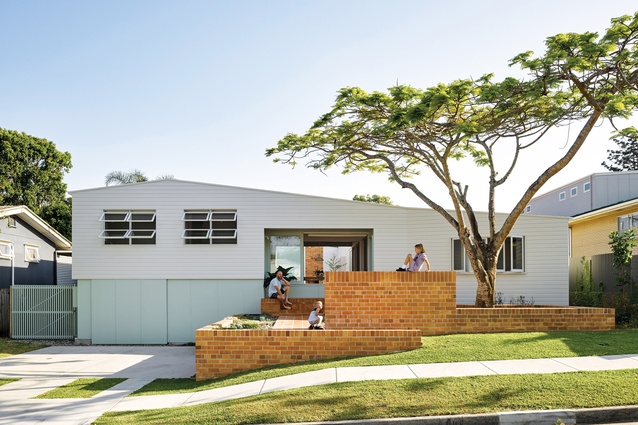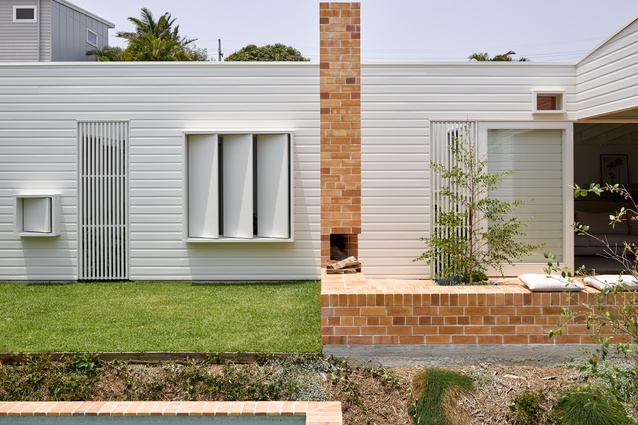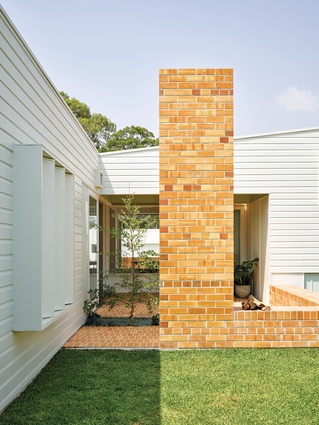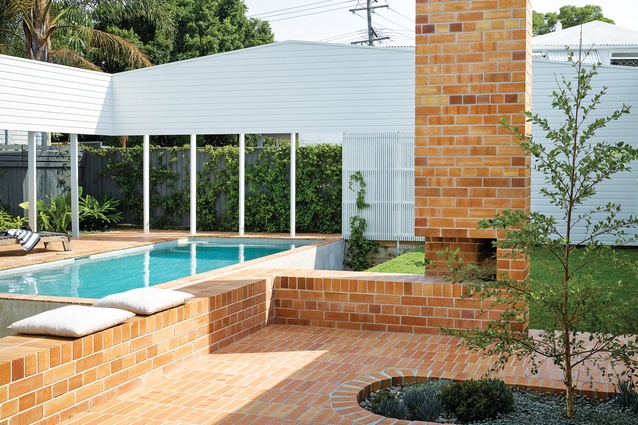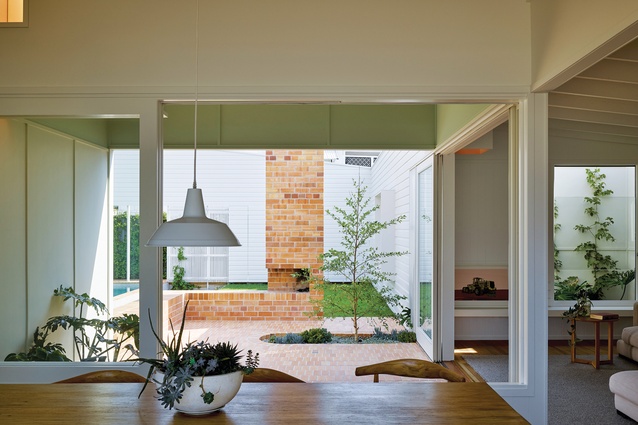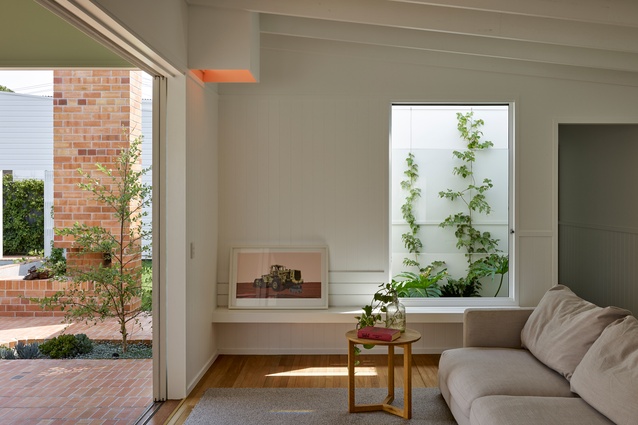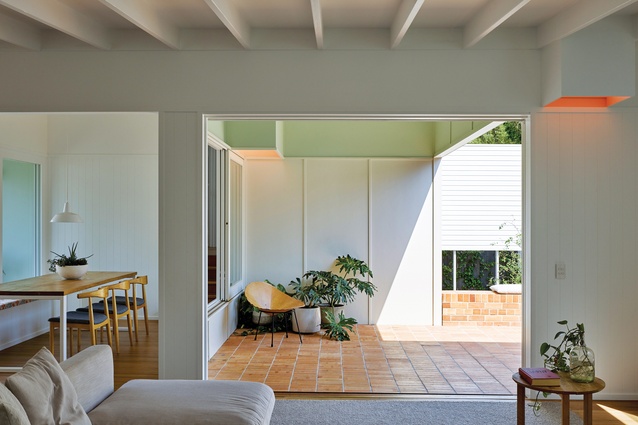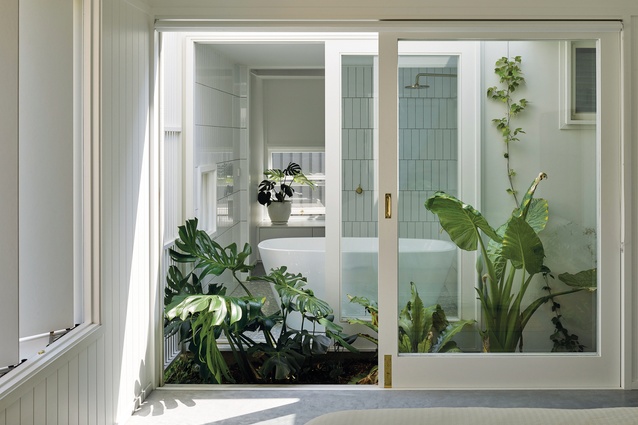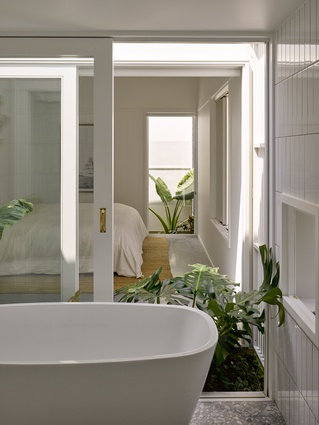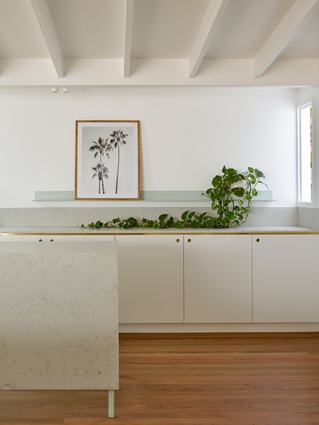‘A mini urban landscape’: Cantala Avenue House
A nuanced understanding of the Gold Coast’s colourful heritage, as well as its local quirks and character, is embedded in this neighbourly family home.
This thoughtful reworking by Matthew Eagle of ME of a 1970s split-level house in the Gold Coast suburb of Miami opens up an internalized floor plan to create a connected and contemporary home for a young family of four. Located in a quiet cul-de-sac, Cantala Cottage is within walking distance of the beach and other local amenities. The cul-de-sac has a relaxed and friendly feeling with deep front yards and low or no boundary walls.
Matthew has peeled back years of incremental additions – a patchwork of external and internal cladding types and a “tacked on” bay window and sunroom – in order to, in his own words, “extract a specialness” from the old cottage. Matthew has preserved and reused a significant amount of the original fabric while also making targeted interventions to address the client’s requirements for their family. These range from a distinctive parents’ space to managing the specific problems of overlooking neighbours and poor drainage due to a cross fall in the topography.
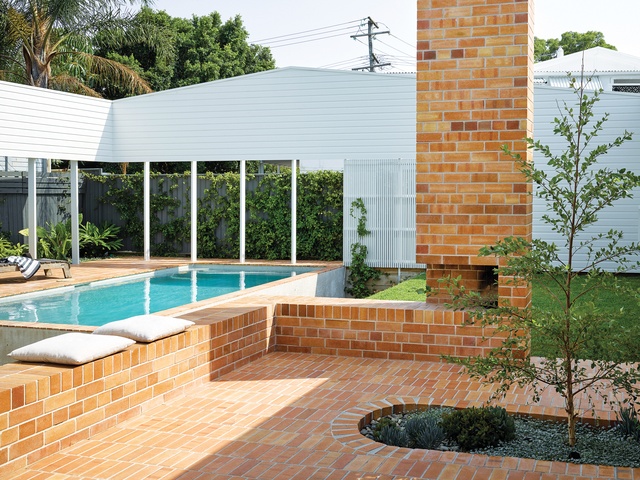
The cul-de-sac frontage, with its friendly “slow street” feel, was a clear opportunity that Matthew sought to celebrate. To keep the street character alive, Matthew shunned the typical connection-killing suburban combination of high fence and carport. Instead, a neat landscape of low brick walls and terraces set among low-planted pebble gardens formalizes the sequence from street to house beneath the spreading shade of an existing poinciana. The new landscape foregrounds the low-pitched gable form of the house, which Matthew has pared back to a simpler composition of clean lines and fewer materials, echoing a mid-century modern past without being imitative.
A brick pathway steps up to a landing porch that leads to a small entry: a practical place for the family to drop bags and kick off shoes. Adjacent to the entry is the client’s study, which angles out beyond the original building envelope to catch a view over the entry terrace and street.
The floor plan of the existing cottage has been extended by 2.5 metres towards the eastern boundary and the kitchen and living spaces have been reconfigured to actively connect inside and outside. A portion of interior space at the centre of the plan has been converted into a sheltered outdoor room, allowing the interior living areas to open completely to this protected space. The brick-paved outdoor room extends to become a courtyard bounded by a low seating edge that is anchored by a fireplace. Beyond the courtyard, a tidy lawn looks across to a swimming pool, separated from it by a “ha-ha” ditch that mitigates the need for pool fencing.
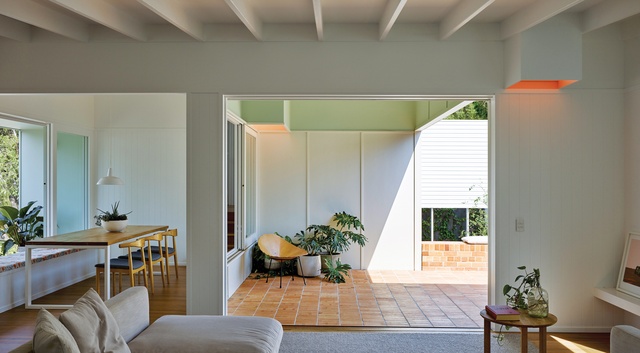
In the newly narrowed space between the outdoor room and the street-side porch is the dining area. Here, a wide window with a built-in seat offers fantastic prospect over the front terrace and cul-de-sac. “The kids spend much of their time in the street,” says Matthew. “Adults come around and sit on the ledges. It’s like a mini urban landscape.” This orchestration of the interface between dwelling and street to support everyday sociality is a great example of a “civic response” in a suburban setting, and it’s an approach that inspires Matthew.
A new wing extends north along the eastern edge of the site to gain space for the parents’ bedroom and bathroom as well as additional utility areas. Matthew acknowledges that this move is counterintuitive because it creates an expanse of wall exposed to the heat of the western sun. Still, it serves to establish much-needed privacy to the garden, courtyard and pool as it joins a wraparound garden wall made of chamferboard that has been profiled to mimic the roofline of the house.
Limited openings in the wall feature opaque shutters that exclude the western sun from the interior of the extension. Daylight enters the interior from above through two narrow garden voids, one between the living room and bedroom, the other between the bedroom and bathroom, and each just less than a metre wide. This tactic for introducing northern light and naturally ventilating the interior while shutting out the western sun springs from an idea first tried at the Burleigh Street House. Even though the green voids are small interventions, they introduce a luxurious spaciousness and serenity to the experience of the interior.
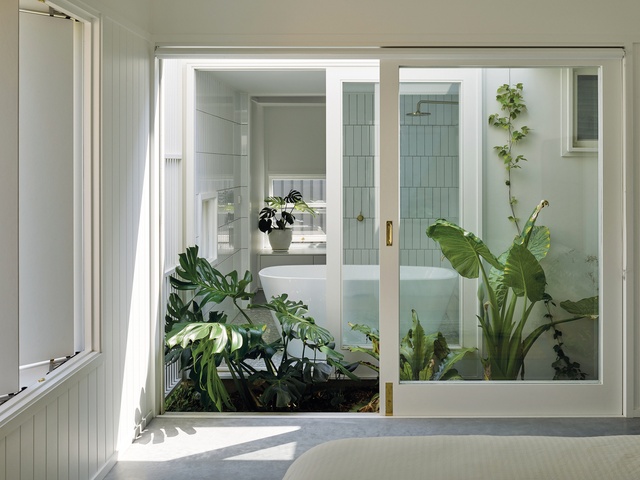
The Gold Coast is unquestionably a place of avid development, a place in which ordinary, neighbourly homes are sacrificed in favour of sky-high apartments that are disconnected from their settings. While many architects understandably strive to spare historically significant residential heritage from a formulaic demolish-and-develop mindset, at Cantala Cottage, Matthew demonstrates that modest buildings in their sociable neighbourhoods also deserve to be celebrated and sustained for at least another generation of family life.
Cantala Avenue House was named joint winner of the Award for House Alteration and Addition over 200m2 and winner of the Australian House of the Year award in the 2020 Houses Awards.
This article first appeared on architectureau.com.

